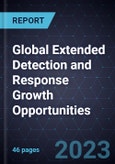Unparalleled Visibility, Integration, and Automation will Enhance Organizations’ Security Posture and Increase their Resilience in an Evolving Threat Landscape
XDR is a vendor-agnostic solution that aggregates data from a wide range of security controls and enables security teams to holistically detect, investigate, and respond to threats. XDR's 3 core promises are cross-layered detection and response, meaningful automation, and third-party integration.
Security vendors take several approaches to XDR, which can be classified as Open (focused on third-party integration, open architecture, and flexibility), Native (focused on providing native integration with the vendor’s own security stack), or Hybrid (combining both approaches with a smaller focus on native integration, allowing customers to decide).
XDR is the result of different solution categories' evolution: vendors from diverse areas and backgrounds have developed their products with XDR functionality. Some companies in this space started their journey with an endpoint detection and response (EDR) solution, adding integration and automation to their already robust detection and response base to enhance it. Others augmented their security orchestration, automation, and response (SOAR) solutions with data ingestion and telemetry or added detection and response to their threat intelligence platforms. Each competitor has a different story and a different approach to XDR.
Only 2 years ago, XDR was underdelivering on its promises. Solutions mainly lacked meaningful automation, third-party integration, or both. ML algorithms, analytics usage, AI, and XDR’s predictive capabilities improved drastically in only a few years, and many solutions now tackle this issue with much more than just playbooks.
XDR's current success, high adoption, and revenue growth are testament to the solution’s capabilities and how they address many pain points in the cybersecurity market. Organizations need visibility, integration, analytics, flexibility, and automation, and XDR’s ability to address these demands allows it to thrive and flourish in the extremely competitive cybersecurity space. While XDR vendors have updated their strategies to offer more competitive solutions and deliver high-end security to their customers, there is still room for enhancements, investments, and innovation to leverage the numerous growth opportunities in the market.








